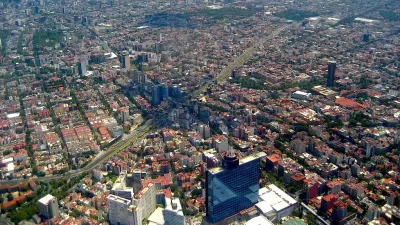Frederick Law Olmsted called Buffalo the best planned city in the United States, but in the second half of the 20th century it transitioned into a prototypical "Rust Belt" city.

Aaron Gordon visited Buffalo in the time before the pandemic to evaluate the city's history as a paragon of 19th century planning, and to explore its potential future at the forefront of what it hopes will be a "mobility revolution."
Aaron Gordon visited Buffalo in the time before the pandemic to evaluate the city's history as a paragon of 19th century planning, and to explore its potential future at the forefront of what it hopes will be a "mobility revolution." The article centers around the work of Stantec and the Congress for New Urbanism (CNU) to help Buffalo achieve its planning goals, in the process overcoming a history of ambitions "big on aspirations and light on specifics."
"Buffalo is not trying to get with the Hyperloop craze or build the next Maglev train," writes Gordon. "It’s trying to find out if these technologies—stuff which operates on American roads right now like autonomous vehicles and electric scooters—can actually provide real solutions to real people while supporting pleasant neighborhoods where people actually want to live."
While the Stantec and CNU team only worked in Buffalo for a few days, Gordon documented an intense planning process for a city that was once the center of an American renaissance in urbanism, and is now challenged by population and economic decline. Because of the city's "good bones," it can appear like urban planning catnip, according to Gordon, for those looking for ways to transition Rust Belt cities into a new era of prosperity. The history of Buffalo, as presented, serves as a microcosm for the history of planning in the United States.
FULL STORY: The 19th Century’s “Best Planned City” Tries Again

Alabama: Trump Terminates Settlements for Black Communities Harmed By Raw Sewage
Trump deemed the landmark civil rights agreement “illegal DEI and environmental justice policy.”

Planetizen Federal Action Tracker
A weekly monitor of how Trump’s orders and actions are impacting planners and planning in America.

The 120 Year Old Tiny Home Villages That Sheltered San Francisco’s Earthquake Refugees
More than a century ago, San Francisco mobilized to house thousands of residents displaced by the 1906 earthquake. Could their strategy offer a model for the present?

In Both Crashes and Crime, Public Transportation is Far Safer than Driving
Contrary to popular assumptions, public transportation has far lower crash and crime rates than automobile travel. For safer communities, improve and encourage transit travel.

Report: Zoning Reforms Should Complement Nashville’s Ambitious Transit Plan
Without reform, restrictive zoning codes will limit the impact of the city’s planned transit expansion and could exclude some of the residents who depend on transit the most.

Judge Orders Release of Frozen IRA, IIJA Funding
The decision is a victory for environmental groups who charged that freezing funds for critical infrastructure and disaster response programs caused “real and irreparable harm” to communities.
Urban Design for Planners 1: Software Tools
This six-course series explores essential urban design concepts using open source software and equips planners with the tools they need to participate fully in the urban design process.
Planning for Universal Design
Learn the tools for implementing Universal Design in planning regulations.
Clanton & Associates, Inc.
Jessamine County Fiscal Court
Institute for Housing and Urban Development Studies (IHS)
City of Grandview
Harvard GSD Executive Education
Toledo-Lucas County Plan Commissions
Salt Lake City
NYU Wagner Graduate School of Public Service





























